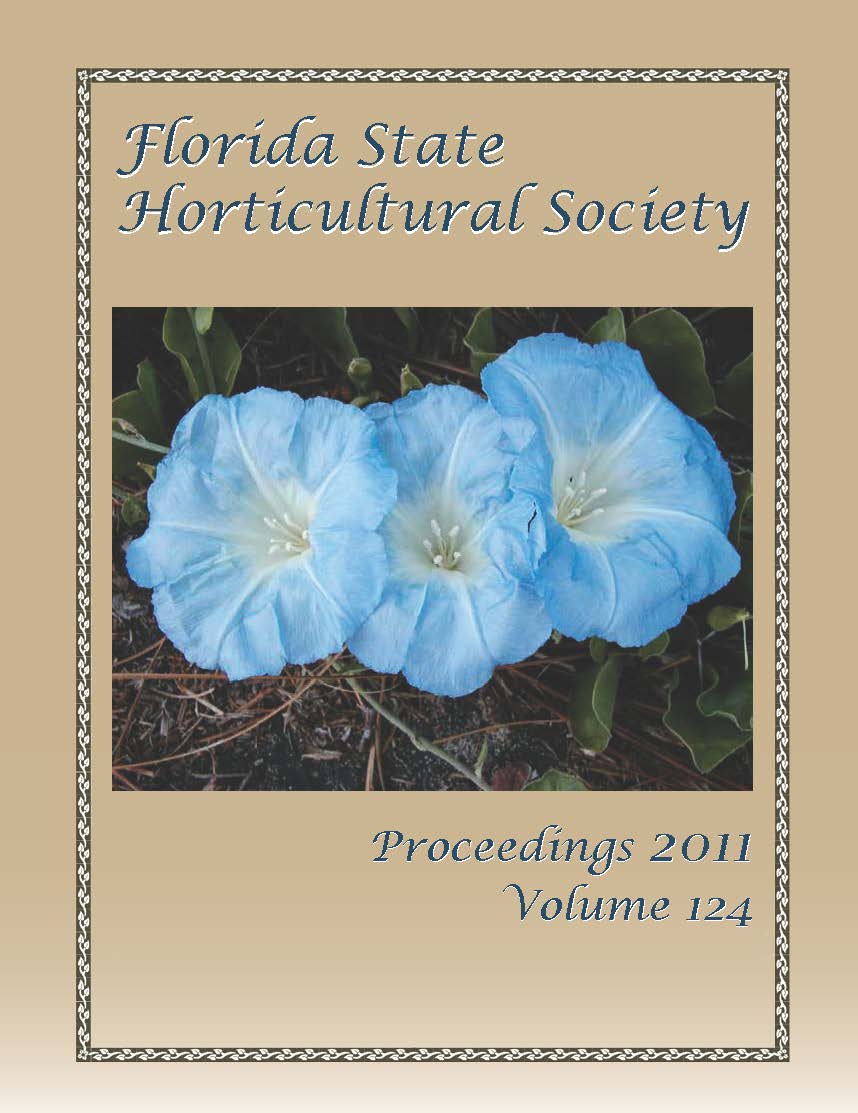Published 2011-12-01
Keywords
- copper ionization,
- copper salt,
- algae,
- chlorophyll,
- yeast and mold
- aerobic bacteria,
- Fe-EDDHA,
- Fe-EDTA ...More
Abstract
Algae growth in irrigation systems can increase equipment clogging and insect pest problems, increases the required application rate for sanitizing agents for controlling waterborne plant pathogens, decreases aesthetic quality on growing media surfaces of ornamental plants, and can be a worker safety hazard on floors. The objective was to quantify the efficacy of copper for inhibiting growth of algae-inoculated nutrient solutions. Transparent vessels (500 mL) contained a blend of subirrigation solution used in irrigation at a Florida nursery, 100 mg·L–1N from a water soluble fertilizer (17N–1.8P–14.1K), eight Cu concentrations from 0 to 8.0 mg·L–1 from either Cu ionization via electrolysis or Cu (NO3)2, Fe at 1 mg·L–1 from either FeEDTA or FeEDDHA, and deionized water, with pH correction to 6.0. After 16 days of incubation in a greenhouse environment, vessels containing 0 to 0.25 mg·L–1Cu from Cu (NO3)2 showed similar increases in chlorophyll and biomass, after which algae content decreased to near zero at 4 mg·L–1 Cu. Yeast and mold density followed similar trends with a 99.9% drop at 2 mg·L–1and a near zero colony count at 4 mg·L–1. Cu ionization was more effective at a given mg·L–1Cu than Cu(NO3)2 at controlling algae and fungi. Algae content was higher with FeEDDHA than FeEDTA at concentrations of Cu below 2 mg·L–1. Aerobic bacteria count, which is an indicator of potential equipment clogging from biofilm, was resistant to all Cu levels and was above recommended levels for irrigation water, averaging 3.56 × 106 colony forming units/mL. This study establishes a protocol for quantifying algal content that can be applied to test the effectiveness of other algaecides.

